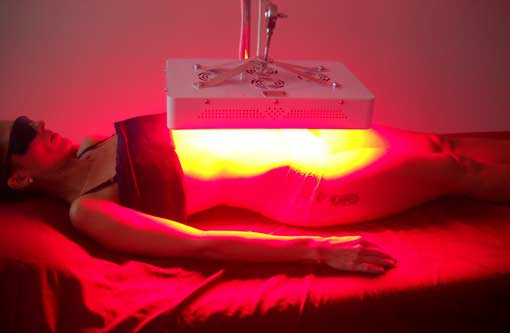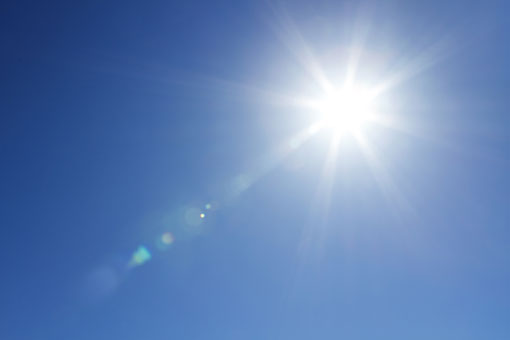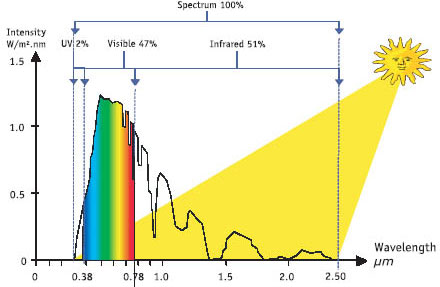Red Light Therapy vs Sunlight
The Difference

LIGHT THERAPY
- * Can be used any time, including night time.
- * Can be used indoors, in privacy.
- * Initial cost and electricity costs
- * Healthy spectrum of light
- * Intensity can be varied
- * No harmful UV light
- * No vitamin D
- * Potentially improves energy production
- * Reduces pain significantly
- * Does not lead to a sun tan

NATURAL SUNLIGHT
- * Not always available (weather, night, etc.)
- * Only available outside
- * Natural, no cost
- * Healthy and unhealthy spectrum of light
- * Intensity cannot be varied
- * UV light can lead to skin damage etc
- * Helps vitamin D production
- * Reduces pain moderately
- * Leads to a sun tan
Key differences between sunlight and red light
Sunlight contains a broad spectrum of light, all the way from ultraviolet light to near-infrared:

Summary
The optimal situation would be to have access to both natural sunlight and some form of red light therapy. Get some sun exposure if you can, then use red light after. Red light is studied is regards to sunburn and speeding up healing of UV radiation damage. Meaning that red light has a protective effect on the potential harm of sunlight. However, red light alone won’t stimulate vitamin D production in the skin, which you need sunlight for. Receiving moderate skin exposure to sunlight for vitamin D production, combined with red light therapy in the same day for cellular energy production is perhaps the most protective approach.Medical & Healthcare Disclaimer
The information contained in this article is not intended or implicitly suggested to be an alternative for professional diagnoses, or profesionally recommended treatments & medical advice. Absolutely all of the content, including the article text itself, images, comments and other information, contained on this web page is for non-specific information purposes only. We strongly suggest that one should never ignore professional health/medical advice and we strongly suggest that one must not delay seeking a professionally recommended medical treatment because of information attained via reading this article/website. The products sold or recommended on this web site are absolutely not for the diagnosis, prevention, monitoring, treatment or alleviation of any specific disease, injury or disability.
